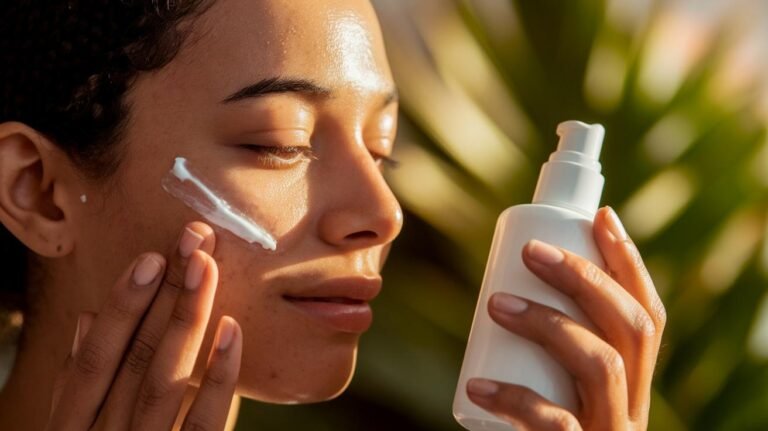Dealing with acne-prone skin can feel like a never-ending battle. One day your skin seems to be clearing up, and the next, you’re facing a new breakout that leaves you feeling frustrated and self-conscious. I’ve been there too, and I know how challenging it can be to find a skincare routine that actually works. The good news? With the right approach and consistent care, you can transform your daily skin care routine and see significant improvements in your complexion. Let’s explore five practical steps that can make a real difference for those of us with acne-prone skin.
Understanding Your Acne-Prone Skin
Before diving into the steps to transform your routine, it’s important to understand what makes acne-prone skin different. Our skin produces oil (sebum) naturally, but those with acne-prone skin often produce excess oil. When this oil combines with dead skin cells, it can clog pores and create the perfect environment for acne-causing bacteria to thrive.
Hormones, genetics, stress, and diet all play roles in how your skin behaves. That’s why a one-size-fits-all approach rarely works. You need a personalized strategy that addresses your specific skin concerns while maintaining your skin’s natural balance.
Step 1: Gentle Cleansing – The Foundation of Clear Skin
The first step in transforming your skincare routine is adopting a gentle cleansing approach. Many people with acne mistakenly believe that harsh, stripping cleansers will solve their problems. In reality, these products can trigger your skin to produce even more oil as a defense mechanism.
Morning and Evening Cleansing Routine
For acne-prone skin, cleansing twice daily is essential:
Look for cleansers with ingredients like salicylic acid (which penetrates oil-filled pores) or benzoyl peroxide (which fights acne-causing bacteria). However, be careful not to overuse these active ingredients, as they can be drying when used too frequently.
Step 2: Exfoliate Strategically – Not Aggressively
Exfoliation is crucial for acne-prone skin because it helps remove dead skin cells that can clog pores. But there’s a right way and a wrong way to do it.
Physical scrubs with large, jagged particles can create micro-tears in your skin, potentially making acne worse and spreading bacteria. Instead, opt for chemical exfoliants that dissolve the bonds between dead skin cells.
Chemical Exfoliation Options
Start by exfoliating just once or twice a week, then gradually increase frequency as your skin adjusts. And remember, more isn’t always better—over-exfoliation can damage your skin barrier and worsen acne.
Step 3: Target Treatment – Precision Is Key
After cleansing and exfoliating, the next step is to apply targeted treatments for your specific acne concerns. These products contain higher concentrations of active ingredients and should be applied only to affected areas.
Effective Acne-Fighting Ingredients
When introducing new treatments, start with one active ingredient at a time. This approach allows you to identify what works for your skin and prevents potential irritation from using multiple active ingredients simultaneously.
Step 4: Hydrate and Moisturize – Yes, Even Oily Skin Needs This
One of the biggest misconceptions about acne-prone skin is that moisturizing will make it worse. In fact, skipping moisturizer can send your oil glands into overdrive, producing even more sebum to compensate for perceived dryness.
The key is choosing the right type of moisturizer. Look for non-comedogenic formulas (meaning they won’t clog pores) that contain lightweight hydrators like hyaluronic acid or glycerin.
Ideal Moisturizers for Acne-Prone Skin
Apply your moisturizer while your skin is still slightly damp to lock in hydration. This simple habit can make a significant difference in how your skin looks and feels throughout the day.
Step 5: Never Skip Sunscreen – The Non-Negotiable Step
The final essential step in your transformed skincare routine is applying sunscreen every single day—rain or shine, indoors or outdoors. UV exposure can darken acne scars (post-inflammatory hyperpigmentation) and some acne medications make your skin more sensitive to the sun.
Choose a broad-spectrum SPF 30 or higher that’s labeled non-comedogenic. Newer formulations include:
If your skin is extremely sensitive, mineral-based sunscreens with zinc oxide or titanium dioxide might be gentler than chemical alternatives.
Consistency Is Your Best Friend
Remember that transforming your skin doesn’t happen overnight. Commit to your new routine for at least 6-8 weeks before expecting significant results. Acne treatments typically need this much time to show their full benefits as your skin cycles through cell turnover.
Track your progress with photos taken in the same lighting each week, and note any patterns in your breakouts related to your menstrual cycle, stress levels, or diet changes.
Transforming your daily skin care routine for acne-prone skin isn’t just about products—it’s about creating sustainable habits that respect your skin’s needs while effectively addressing its challenges. By following these five steps consistently, you’ll be giving your skin the best chance to heal and thrive. Remember that occasional breakouts happen even with the best routines, so be patient with yourself and your skin on this journey. With time and the right approach, clearer skin is absolutely within reach.







